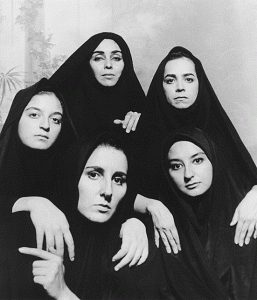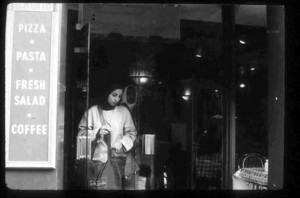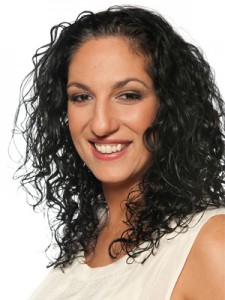
Miriam Cooke has described her use of “Muslimwoman” in one word as a reference to embracing and performing a singular gendered and religious identity, a way of reflecting the intertwining of gender and religion and describing this erasure of diversity. In 2008, in her essay on deploying this term, Cooke explained:
The neologism Muslimwoman draws attention to the emergence of a new singular religious and gendered identification that overlays national, ethnic, cultural, historical, and even philosophical diversity. A recent phenomenon tied to growing Islamophobia, this identification is created for Muslim women by outside forces, whether non-Muslims or Islamist men. Muslimwoman locates a boundary between “us” and “them.” As women, Muslim women are outsider/insiders within Muslim communities where, to belong, their identity increasingly is tied to the idea of the veil. As Muslims, they are negotiating cultural outsider/insider roles in Muslim-minority societies.
As the drama around the rediscovered visibility of the Muslim woman in the modern world takes another manifestation post-2011, Cooke’s use of the ”Muslimwoman” is worth revisiting, particularly her argument about its deployment as a tool of political consciousness. As she points out:
Some women reject The Muslimwoman identification and others embrace it. Its uniformity across gulfs of difference intensifies an awareness of the global community in which they participate, a cosmopolitan consciousness that connects strangers who recognize an unprecedented commonality in terms of religion and gender. Their political consciousness qua Muslimwoman affirms the inextricable bond between gender and religion.
In combining these two words used to evoke a singular identity, Cooke follows Islamicist Sherman Jackson’s use of the term Blackamerican and Joan Martin’s term blackwoman. In Cooke’s case, however, there’s the danger of slippage between Arab and Muslim, which relates to Cooke’s own background in Arabic literature, including her co-edited anthology of Arab feminist writing, Opening the Gates, and War’s Other Stories: Women Writers on the Lebanese Civil War.

This problem appears in Women Claim Islam: Claiming Islamic Feminism Through Literature, where Cooke speaks of how “women’s unprecedented independence as a result of the revolution in reproduction technology, and their massive entry into the paid workforce has begun to erode the patriarchal system” and notes that “Arab women, historically invisible, are part of this trend.” In an explanation of this new visibility, she coins another term, “tribal modernity,” which sums up an imagined past and anticipated future. Examining the mandate to be modern, she connects modernity to image and explores how image is affected by the presence of women in public space as leaders and intellectuals. Again, post-2011, this is particularly relevant with the drive for women’s increased political participation in “the Middle East.”
Yet how new is the new visibility of the Muslimwoman? Cooke herself notes that anxiety and curiousity about the new prominence of Muslim women goes back to the colonial era when Muslim women’s appearance was pivotal to their role in both the Muslim and the Orientalist imaginary.
It is noteworthy that Cooke has to set up a distinction between writers like Nawal Saadawi who have been writing since the 60’s and Peninsula women before she begins narrating her meeting a group of women journalists in Saudia Arabia in 1983 who called themselves the “Muhariryat” (playing on the double meaning of muharir as both editor and liberator) and her return in 1999, at the first Saudi women’s conference.
This illustrates a sense that you have to push back and restrict what Muslim woman means in order to have it be a permanently groundbreaking field. However, Cooke does take up the costs of the fetishization of the “Muslimwoman” and capitalizing on this newly lucrative identity by writing for the market in the popularity of works by “native informants” Ayan Hirsi Ali, Kola Boof, Irshad Manji and Azar Nafisi, as well as the hoaxes such as Norma Khouri’s Forbidden Love. To this might be added the reception of artists such as Ghada Amer, Shahzia Sikander, and Shirin Neshat, and how any perceived departures from the framework of “Muslimwoman” affect this reception. For example, G. Roger Denson celebrates Neshat as Artist of the Decade for reflecting “the ideological war being waged between Islam and the secular world over matters of gender, religion, and democracy,” even as he recognizes:
Neshat’s departures from her usual subject of Iranian women, which we see in her 2002 series Tooba, a reference to the feminine Tree of Paradise cited in the Qur’an but which Neshat shot in Oaxaca, Mexico, and her most recent series, Games of Desire, which references the Laotian customs and signage of courtship among elderly men and women.
This raises questions of when and how artists like Fatima Tuggar and Zarina Hashmi and Dolly Unithan are seen as Muslim rather than Nigerian or Indian or Malaysian, when non-Muslim artists with “Muslim” names such as Laylah Ali are driven into this category, and what recognizable “Muslimwoman” art looks like.
If the “Muslimwoman” takes into account the shift from placing women into national categories to always putting them in a Muslim basket post 9/11, perhaps post-2011 there has been a shift in the other direction, even as the place of Muslim women is a constant refrain, as Tunisian, Egyptian, Libyan, Yemeni and Syrian women are called on to speak for their countries undergoing uprisings, as in the case of the rise to prominence of Tawakkul Karman.
This gendering of the Arab Spring offers the hope that a new dynamic can result from this turning point where the ”Muslimwoman” becomes a potential tool of collective agency even as it fragments into women within the political and religious contexts around them and within the diversity of their own individual lives.











